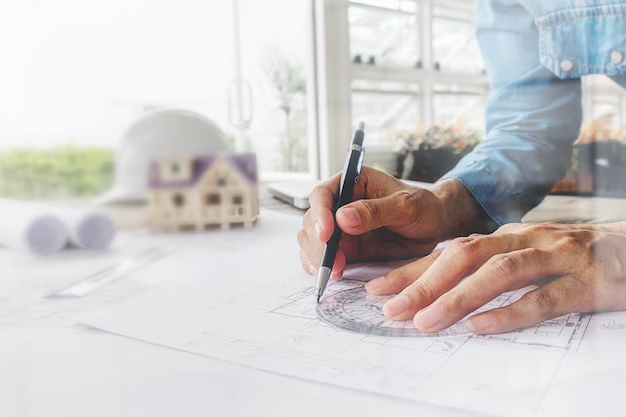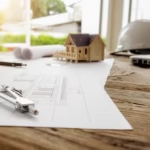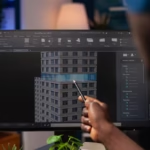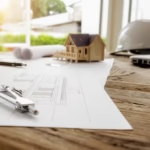In the 21st century, cities around the world are undergoing a transformation, as they harness the power of technology to become smarter, more sustainable, and more efficient. The concept of a Smart City involves the integration of information technology (IT) and Internet of Things (IoT) systems into urban infrastructure to enhance the quality of life, improve resource management, and reduce environmental impact. At the heart of this transformation lies architecture, which is rapidly evolving to accommodate the needs of a digital society.
In this article, we’ll explore how technology is reshaping architecture in the context of smart cities, revolutionizing urban spaces with new, innovative designs that enhance functionality, sustainability, and livability.
1. The Rise of Smart Cities
A Smart City is a city that uses digital technology to enhance performance and well-being, reduce costs and resource consumption, and engage more effectively with its citizens. This transformation is primarily driven by advancements in data collection, IoT, and cloud computing, all of which work in harmony to make cities more responsive to the needs of their inhabitants.
Technology is being used across various urban sectors such as transportation, healthcare, energy, waste management, and, of course, architecture. Smart cities leverage a variety of tools to improve infrastructure, enhance public services, and create more resilient and livable urban environments.
2. Technology-Driven Architectural Innovations
As smart cities evolve, architecture is adapting to the opportunities and challenges posed by digital technologies. Let’s take a look at some of the most transformative ways technology is shaping the built environment.
a. Intelligent Buildings with IoT Integration
One of the primary ways technology is influencing architecture is through smart buildings. These structures integrate IoT devices that collect and analyze data to optimize energy use, security, and comfort. For instance:
- Energy Management: Smart buildings can use sensors and AI to monitor energy consumption in real-time, automatically adjusting lighting, heating, cooling, and ventilation systems to reduce waste and lower utility costs.
- Environmental Control: IoT devices can monitor indoor air quality, temperature, humidity, and lighting, ensuring optimal conditions for occupants and reducing environmental impact.
- Security: Smart buildings often come equipped with AI-powered surveillance, access control systems, and even facial recognition technology to enhance security.
By embedding technology within buildings, architects are designing structures that are not just spaces to live or work in, but dynamic environments that adapt to the changing needs of users.
b. Sustainable and Eco-Friendly Design
Sustainability is a core principle of modern architecture, and smart cities are pushing this agenda to new heights. Technology enables architects to design eco-friendly buildings that minimize energy use, maximize resource efficiency, and reduce waste. Some key technologies driving sustainable architecture include:
- Solar Panels and Energy Harvesting: Building-integrated photovoltaic (BIPV) systems allow buildings to generate their own energy, significantly reducing reliance on traditional power sources.
- Green Roofs and Vertical Gardens: These features are enhanced with sensors to monitor plant health, water usage, and temperature, contributing to both environmental sustainability and the aesthetic value of the structure.
- Smart Waste Management: Smart waste systems, such as automatic sorting and waste tracking sensors, are being integrated into buildings and neighborhoods, improving recycling efficiency and minimizing landfill waste.
Technologies that optimize the use of natural resources, reduce the carbon footprint of buildings, and facilitate sustainable living are becoming the standard in smart city design.
c. Adaptive Reuse and Urban Regeneration
Smart cities are also driving the adaptive reuse of old, underutilized buildings. Through the integration of modern technology, architects can revitalize and repurpose historic or obsolete buildings, giving them new functions while preserving their cultural and architectural significance. The use of smart technology in these spaces can increase their energy efficiency and functionality, making them fit for modern use without demolishing their unique character.
For example, some cities are transforming old industrial buildings into modern office spaces or mixed-use developments, using smart systems to improve their energy consumption, accessibility, and overall environmental impact.
d. Augmented and Virtual Reality for Design and Planning
Architects and urban planners are increasingly using augmented reality (AR) and virtual reality (VR) to design and visualize projects before construction begins. These technologies allow them to create 3D models of buildings and urban environments, enabling real-time collaboration and decision-making.
- Virtual Reality: VR allows architects to give clients immersive tours of buildings and spaces before construction even starts, helping with design adjustments and ensuring a better understanding of the final product.
- Augmented Reality: AR enhances the physical world with digital overlays, allowing architects to visualize how a building or urban development will look in its environment, and even simulate how it will react to certain environmental factors like traffic flow or weather patterns.
These technologies make the design and construction process more efficient, reduce errors, and help ensure that buildings and urban spaces are more user-centric.
3. Smart Infrastructure and Transportation Systems
Smart cities rely heavily on intelligent infrastructure, which includes everything from roads and bridges to public transportation systems and utilities. Technology plays a central role in improving the performance, safety, and sustainability of these systems, all of which influence the design of urban spaces and architecture.
a. Connected Transportation Networks
In smart cities, the design of transportation systems is increasingly integrated with digital technology. Autonomous vehicles, electric car charging stations, and smart traffic management systems are transforming how we think about urban mobility. For example:
- Smart Traffic Lights: These lights can adjust in real-time based on traffic flow, reducing congestion and improving energy efficiency.
- Electric Vehicle (EV) Charging Stations: These are becoming more common in urban spaces, integrated into parking garages, streets, and even residential buildings, making electric car ownership more convenient.
- Mobility as a Service (MaaS): Cities are adopting MaaS platforms that allow people to seamlessly plan, book, and pay for a variety of transport options (e.g., buses, trains, bikes, and ride-sharing services) through a single app.
As transportation systems become more interconnected with technology, architects must design urban spaces that accommodate and integrate these new modes of mobility.
b. Smart Utilities and Resource Management
Cities are incorporating smart technology into essential utilities, such as water, electricity, and waste management. Smart meters and sensors help cities monitor and manage resource consumption in real-time, reducing waste and improving efficiency. This means architects must design buildings and infrastructure that can interact seamlessly with these systems.
- Smart Water Management: Water systems with IoT-enabled sensors can track water usage, detect leaks, and optimize distribution.
- Waste Management: Smart waste bins equipped with sensors can alert waste management teams when they are full, reducing unnecessary pickups and improving the efficiency of waste collection.
These technologies help reduce the environmental footprint of cities and create more sustainable, resource-efficient urban spaces.
4. Urban Resilience and Climate Adaptation
Smart cities are not just about improving efficiency—they also focus on making cities more resilient to climate change and environmental challenges. Through technology, architects are designing buildings and urban spaces that can adapt to changing environmental conditions, such as rising sea levels, extreme weather events, and temperature fluctuations.
a. Climate-Resilient Architecture
Architects are increasingly designing climate-adaptive buildings that can withstand extreme weather events. For example, buildings in flood-prone areas might include elevated structures or waterproof materials to prevent damage. Similarly, green infrastructure like permeable pavements and stormwater management systems can reduce the risk of flooding and promote sustainable urban drainage.
b. Data-Driven Resilience Planning
Smart cities use big data to predict and manage climate risks. Urban planners and architects rely on real-time data to make informed decisions about future developments and design choices that prioritize climate resilience.
5. The Future of Smart Cities and Architecture
As technology continues to evolve, smart cities and the architecture within them will continue to advance. Key trends to watch for in the future include:
- AI-Driven Design: Artificial intelligence could play an even bigger role in designing buildings that adapt in real-time to changing environmental and user needs.
- 3D Printing and Modular Construction: 3D printing technology allows for the rapid construction of buildings, with the possibility of more flexible and customized designs that integrate smart technologies from the outset.
- Urban Agriculture: The integration of food production systems into urban spaces could lead to more sustainable, self-sufficient cities.
Conclusion: The Transformation of Architecture in Smart Cities
Technology is fundamentally changing the way cities are designed, built, and experienced. In smart cities, architecture is no longer just about aesthetics; it’s about creating spaces that are functional, sustainable, adaptable, and capable of responding to the needs of the digital age. As cities continue to embrace technology, architects will play a critical role in shaping the future of urban environments, ensuring that they are not only smarter but also more livable, resilient, and inclusive. The convergence of technology and architecture promises a new era of urban design that enhances the quality of life for all citizens.




